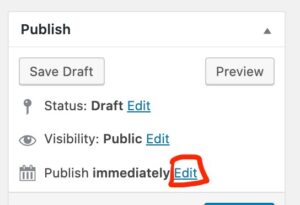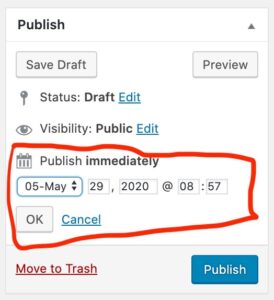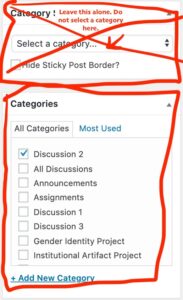This is a reminder that by 11:59 pm tonight you should post your comments on discussion 2, reading journal 3 over the two assigned readings, and discussion 3 posts.
After reading your journal and discussion 2 posts, I wanted to make a few notes. It is clear that you all are learning to grapple with new terms and concepts, or the reframing of concept you had understood differently. It is really great reading your writing processing the assigned texts with your experiences. I loved your identity diagrams and the ways you wrote about them. I was also happy to see that it was a useful exercise for you all. As Jhulio wrote, “it is incredible how a simple diagram can help you be more conscious of the many ways you identify yourself and how things you do help others define your sex and gender.” I couldn’t agree more. Taking the time to write it out makes a difference! Just one benefit of writing across the curriculum and WI courses.
Before going much further, I want to take a moment to acknowledge what is happening in our world and to invite you to write about it in comments on this post. Some of you brought up the current protests in your writing – THANK YOU. If we were in class I would bring this up and we would take time processing together. That might be a little harder here, but I want to open it up for you to share your thoughts, feelings, experiences related to systemic racism, police brutality, and social protest. It is really important that we pay attention, employ media literacy skills, and support one another in solidarity right now (and always). And, as I hope you are learning, feminism and gender studies are intersectional (at least the way we are studying it). So issues of race are feminist issues. Issues of police brutality are feminist issues.
A few additional notes. I want to underscore that western society is built on a gender binary that we created. In many non-western and indigenous cultures, gender was always treated as more fluid. In some cultures, those who embraced more than one gender are/were also considered to be connected to the spiritual world and important community members. However, through settler-colonial practices, much of the globe has been forced to adopt a binary. The western world also created a racial binary. Lydia X. Z. Brown notes:
“Both gender and race are, in part, socially constructed. They are also rooted in certain lived experiences separate from abstract concepts, but there are significant differences. Gender can be shaped, often intensely, by culture. The contemporary underpinnings of the gender binary itself are rooted in imperial colonialism, where the white saviorist civilizing mission included enforcing patriarchal and restrictive gender roles onto Black, brown, Asian, and indigenous peoples’ societies wherein gender roles often spanned multiple categories and allocations of labor—including in Filipinx culture. Yet race, unlike gender, is tied to intergenerational and biological histories.” (Full Article Here)
I think this is useful to remember as we discuss intersectional identities. It is also useful to know the difference between race and ethnicity – though to be sure both are socially constructed. Race is about phenotypes – or physical characteristics like skin color and hair texture. Ethnicity is linked to cultural expression and identification. So, for example, being Indian is an ethnicity, though certainly within Indian culture, there is a lot of ethnic variation (Punjabi, Bengali, Tamil, to name a few). However, “Asian” or “South Asian” is a race that often includes ethnic groups such as Indian, Thai, Filipinx, Laotian, etc. Of course, all of these are constructed and all serve to divide, but they also unite individuals around shared identity and can be important when pointing out systemic disparity. In New York, because we are such a global city, we seem to understand that not all people who are black are African American and that not all people who are Latinx or Hispanic are “Mexican,” as the current president often suggests, but have a range of nationalities and ethnicities. In this way, New Yorkers are aware of this difference, even if we can’t always explain it.
Next, I want to ask you to be sure that you don’t conflate gender and sexuality. Gender is how you identify and express and sexuality is who you desire in terms of physical attraction and romantic attraction. People often assume that all lesbians are masculine and all gay men are feminine. In this sentence, you can see I’m using terms related to gender (masculine and feminine) and terms related to BOTH sexuality and gender (lesbian and gay man). Many people confuse these because part of the dominant concept of gender is that men are sexually attracted to women and women are sexually attracted to men. When one is a man who is attracted to other men (or woman attracted to women) that is sexuality, but it also disrupts our traditional understandings of gender because we are taught a “real” man or woman is heterosexual.
MANY people cannot think outside of the gender binary. This is largely because of how society is structured and everything tells us you go in one of two boxes. They say there are only two genders. This statement erases the lived experience of many people around the world. Some may believe there are two genders, but reality does not support that. We also think there are two sexes, but that is also a construction. Sex is a combination of morphology (what you see), hormones, and chromosomes, and these things change throughout our life. When one is assigned a sex at birth, the doctors are only using morphology, or what they can see, and not examining the entire picture.
Last lecture-y note, one of you brought up the Bechdel test (it autocorrected to beachfront test in the post so I wanted to clarify). I wanted to share a video or two about the test. It is amazing that most movies still don’t pass it! Here is a video about the test from 2009:
And here is a link to the Bechdel Test movie list that people (like you!) can add to.




